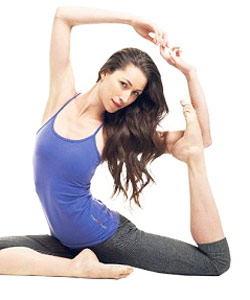
Yoga may be one of the hottest fitness trends sweeping the country, but a Florida State University medical educator thinks it also may be the prescription for ailments ranging from headaches to heart disease.
Dr. Richard Usatine, associate dean of medical education at the FSU College of Medicine, is the co-author, along with yoga therapist Larry Payne, of “Yoga Rx,” (2002, Broadway Press), a new book that offers step-by-step programs to promote health, wellness and healing for common ailments.
“Yoga can be as important as any medication,” Usatine said. “This is a lifestyle change. This is a way to improve the quality of your life.”
For each type of ailment, Usatine and Payne recommend prescriptions that combine a specific yoga routine with common-sense suggestions, such as dietary changes, exercise and getting enough sleep. For example, those suffering from asthma may want to try walking as well as a yoga routine that includes the positions of “wing and prayer,” “the newspaper” and “seated chair twist.” Depressed? The authors say the “mountain posture,” “cobra” and the “sitting cat” may help to lift your spirits. Anxiety? Heartburn? Migraines? There’s a remedy for these and just about every other common malady.
Usatine, a family physician who first tried yoga in college, often recommended yoga and yoga breathing techniques to patients to help them manage stress and even quit smoking. In 1997, after suffering recurring back pain after a car accident, he was referred to Payne for yoga therapy. His back pain disappeared, and the pair began collaborating on providing yoga therapy education to medical students at the University of California at Los Angeles.
The pair then began to work on the book, believed to be the first for the general public that combines a medical doctor’s point of view with a yoga therapist’s. While the authors are careful to note that “Yoga Rx” is not meant to replace modern medical treatment, they assert that yoga therapy can complement medical treatment. They say patients should see considerable results within a couple of weeks and significant changes within three months.
In the meantime, yoga therapy is gaining more attention in the medical community, according to Usatine.
“As more Americans are doing yoga and asking about it, there is more medical awareness of it,” he said. “As the number of yoga therapists grows and the demand for it from patients grows, yoga will become a larger part of the practice of medicine in this country.” The study is done by Florida State University.